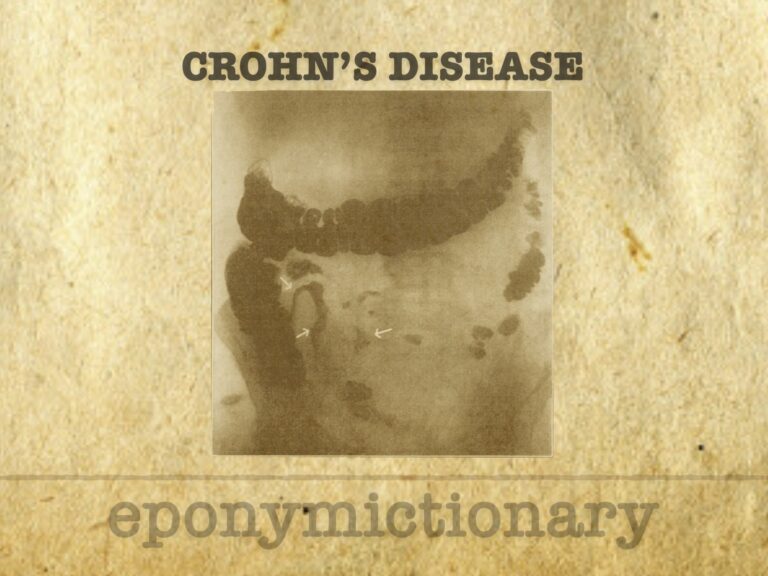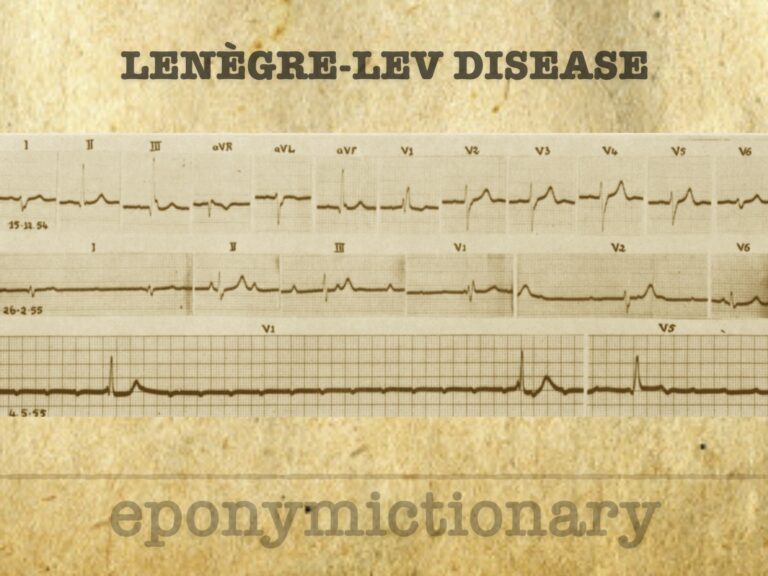
Adrien Barrère
Adrien Barrère (Adrien Baneux) (1874-1931) was a French medical caricaturist, poster artist and painter in Paris during the Belle Époque

Adrien Barrère (Adrien Baneux) (1874-1931) was a French medical caricaturist, poster artist and painter in Paris during the Belle Époque

Koplik spots are pathognomonic buccal lesions in early measles, first described by Henry Koplik in 1896, aiding pre-rash diagnosis and outbreak control.

Chronic inflammatory bowel disease affecting the GI tract, Crohn’s disease was first defined in 1932 but described decades earlier by Dalziel and others

EGPA (Churg–Strauss syndrome): rare ANCA-associated vasculitis with asthma, eosinophilia, and systemic granulomatous inflammation of small vessels

Acquired fibrous degeneration of the left and right bundle branches, eventually manifesting as permanent complete atrioventricular (AV) dissociation with cardiac pauses and Adams-Stokes attacks

Stokes-Adams syndrome is an abrupt, transient loss of consciousness due to a sudden but pronounced decrease in the cardiac output

Cheyne-Stokes respiration is a cyclical breathing pattern of apnoea and hyperpnoea, seen in heart failure, brain injury, and end-of-life settings.
May–Thurner syndrome (MTS). Venous compression syndrome causing left-sided iliofemoral DVT, first anatomically defined by May and Thurner in 1957.

Janeway lesions; painless, haemorrhagic macules of the palms/soles linked to infective endocarditis. Edward Gamaliel Janeway (1899)

Guillain-Barré syndrome is the most common and severe acute inflammatory paralytic neuropathy. The classical description of GBS involves rapidly progressive bilateral weakness, usually starting in the distal lower extremities and ascending proximally.

Bell’s palsy: Acute idiopathic unilateral paralysis of the facial nerve. Named after Sir Charles Bell and his description in 1827

Pancoast Tumour is a primary bronchogenic carcinoma which arises in the apex of the lung at the superior pulmonary sulcus.